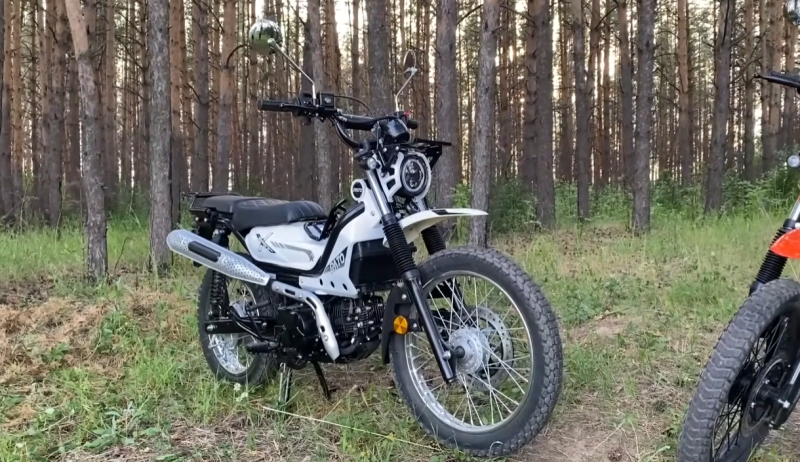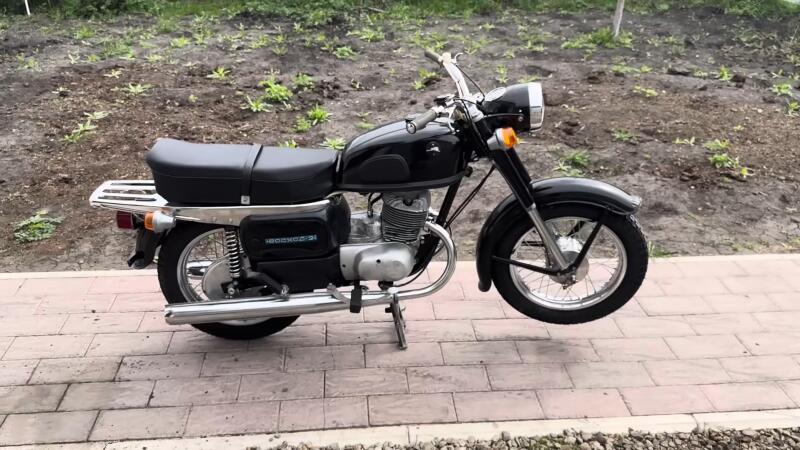This approach had both its advantages (the production of the passenger version was mastered in a short time) and disadvantages. The latter in the TE7 design includes an overestimated mass, and in the VL60 it is the impossibility of maintaining a high speed regime for a long time.
 The TEP60 diesel locomotive is getting ready for work - starting with starting and warming up. Photo: youtube.com
The TEP60 diesel locomotive is getting ready for work - starting with starting and warming up. Photo: youtube.comIn general, the situation clearly suggested a solution: Soviet roads needed a new fast locomotive. Moreover, its creation should initially be oriented towards passenger use (taking into account this fact in all design elements of the future diesel locomotive).
The speed record that dispelled all doubts
If on short routes high speed was not something absolutely necessary, then for long-distance trains it almost came out in first place. Experts have determined its optimal threshold to be 140 km/h. But no technology in the second half of the 50s could provide such an indicator. Therefore, engineers set about designing a completely new model.
An important task for the country was entrusted to specialists from the Kolomna Diesel Locomotive Plant. The memo of the USSR Ministry of Railways listed a number of requirements that future rail equipment must meet. Taking into account the specifics of use and the requirement for good driving performance, it was recommended to opt for a single-section design. In addition, the need to use an electric traction drive and ensure: weight - no more than 126 tons, and speed - no less than 140 km/h was noted.
 The TEP60 diesel locomotive performs work on the route. Photo: youtube.com
The TEP60 diesel locomotive performs work on the route. Photo: youtube.comJust a year later (in 1957), the project, supervised by the chief designer of the enterprise L. Lebedyansky, was successfully completed. It was also important that the car received an excellent diesel drive, which provided it with amazing speed qualities. The technical part of the work on the new product was completed in the late spring of 1959. This opened the way to mass production.
April 21, 1960 became a landmark for the new model and the company that manufactured it. That day, the first-born TEP60-001 was installed on wheelsets. A few months later, all work on it was completely completed.
By the end of this year, the plant employees managed to assemble the second unit of the new diesel locomotive. But this fact was not the most surprising. The fact is that during preliminary tests, an experienced driver was able to accelerate the first TEP60 to an unimaginable 193 km/h! This became an absolute record for thermally powered passenger vehicles of that time. And it turned out to be the best confirmation of the successful outcome of the work of the entire team of the Kolomna enterprise.
For ease of operation, the TEP60 received two control cabins. In addition, here we are dealing with a supporting body of a welded structure, mounted on two three-axle bogies. Their frames were made from a range of stamped and cast elements with welded joints. To facilitate the overall structure, the body was sheathed with riveted duralumin. The classic automatic coupler used was SA-3.
 TEP60 used in passenger traffic. Photo: youtube.com
TEP60 used in passenger traffic. Photo: youtube.comThe traction electric motors were models of the ED series (initially “101”, later “one hundred and fifth” and “one hundred and eighth”). Their support-frame suspension was provided by the French Alstom system. The traction transmission was performed using a one-way, straight-tooth type. If the excellent engine was designed by the Kolomna residents themselves, then for the electrical equipment they needed help from partners from the Kharkov plant “Electrotyazhmash”.
Other technical indicators of TEP60
We have already learned about high driving performance, now we will look at other characteristics of the model. Of course, good speed could ensure uninterrupted operation in compliance with the schedule of many Soviet long-distance trains. But it was necessary to take into account some other points. Such as reliability and sufficient traction. Here the 10D45 diesel engine installed on the diesel locomotive (in production models was replaced by a modified 11D45A with improved characteristics) was very helpful:
✅ power – 2237 kW (3000 hp)
✅ transmission type – electric (direct current)
✅ operating speed - 160 km / h
What is unusual about the new technology is not only its nimbleness, but also some elements of its external design. So the front part of the locomotive received three-segment glass. This decision seemed controversial, but it was very useful in the future, when the diesel locomotive was used in a system of many units - a transition door was equipped here.
Serial production of TEP60 started in 1961. But three years later, the railway workers faced a new problem. What initially seemed like an advantage became an unexpected obstacle. As everyone knows, the golden rule of mechanics says: “what you gain in speed, you lose in power.” But everyone believed that towing passenger cars would not require any special effort, the main thing being good sprinting qualities.
 In the driver's cabin of the TEP60 diesel locomotive. Photo: youtube.com
In the driver's cabin of the TEP60 diesel locomotive. Photo: youtube.comHowever, over time, it became clear that when working with multi-car TEP60 trains, there was simply not enough power, especially when driving along long inclines. We came out of this situation by offering a new product - 2TEP60, consisting of a paired design of two passenger diesel locomotives. This is where the middle front window came in handy, which in the non-working part was turned into a walk-through door. Below you can see the parameters of the single-section version of the locomotive:
✅ length - 19,25 m
✅ height (according to the grilles on the roof) – 4,67 (5,1) m
✅ width - 3,086 m
✅ wheel diameter – 1050 mm
By railway standards, the locomotive looked quite compact, which was confirmed by the low weight of the structure - 126 tons. For its uninterrupted autonomous operation, a sufficient supply of fuel and other consumables was also required. The creators tried to ensure these indicators at the required level:
✅ fuel – 5-6,4 t
✅ sand – 0,6 t
✅ water – 1,2/1,58 t
✅ oil – 0,88-1,56 t
Good prospects and subsequent successful operation made the equipment indispensable on many non-electrified sections of Soviet roads for many years. Even after the collapse of the USSR, TEP60 was often used in the road sector of the former Soviet Slavic republics and the Baltic countries.
Diesel locomotives have taken root most of all in Belarus. It was on the territory of this state that the fact of the final withdrawal of a veteran from circulation on thermal traction was recorded. This happened at the beginning of 2020. Moreover, over the past eight years, local owners have remained the only refuge for the “sixtieth”.
Completion of production
Everyone understands that the most popular equipment will one day need to be replaced. The very fact that the active use of TEP60 has practically stretched over almost six decades clearly speaks in favor of this model. But its insufficient power for towing long structures became critical by the mid-70s.
 Diesel locomotive engine with 3000 horsepower. Photo: youtube.com
Diesel locomotive engine with 3000 horsepower. Photo: youtube.comBy that time, passenger traffic on Soviet roads had increased significantly and many fast trains had a 20-car (or higher) train. Twin locomotives turned out to be only a temporary solution; in 1973, a new, more powerful model TEP-70 appeared, which became a worthy replacement for its predecessor.
Over a quarter-century of production, 1240 units of the base model were assembled. The improved modification TEP-65 existed only in a single copy, but 116 pairs were produced over the entire period. The total number of manufactured equipment of this type was 1357 diesel locomotives.










